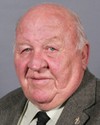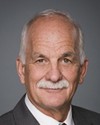Mr. Speaker, I am pleased to rise today to speak to Bill C-32, an act to amend the Criminal Code and to make consequential amendments to other acts.
The bill would help bring Canada's impaired driving laws into the 21st century and would greatly assist the police in their efforts to investigate impaired driving incidents and the Crown in its prosecutions of alleged offenders.
I know all members recognize that impaired driving remains the single criminal offence that is most likely to result in the death or injury of Canadians. If passed, this legislation will make an immeasurable contribution to the safety of all Canadians. Therefore, I trust that all parties will support the legislation and that we can cooperate so that these needed changes can be considered by the standing committee expeditiously.
I can assure all members that the government is open to consideration of any improvements that the committee can suggest, after hearing from stakeholders, to make the bill even more effective in achieving its goals.
The bill has three main components.
First, it would give police officers the tools they need to investigate drug impaired driving.
Second, it would make changes that reflect the great advances made in breathalyzer technology since Parliament first introduced breath testing almost 40 years ago.
Third, it would introduce new offences and increase penalties for existing offences.
Many members of the House are familiar with the drug impaired provisions of the bill. They are virtually identical to the provisions of Bill C-16, which was introduced in an earlier Parliament. That bill was reviewed and amended in committee and reported unanimously with amendments by the committee. However, it died on the order paper.
There is no question that police and prosecutors are eagerly awaiting the passage of those changes.
I will therefore confine my remarks to the new provisions in Bill C-32 so that members will understand what motivated the government to bring these amendments forward.
Probably the most important change in this bill is the proposal to ensure that only scientifically valid defences can be used where a person is accused of driving with a concentration of alcohol exceeding 80 milligrams in 100 millilitres of blood. This is known as driving over 80.
Parliament first enacted an alcohol driving offence in 1921. Our current Criminal Code, section 253, subsection (a), offence of impaired driving, was enacted in 1951. It has been known for more than 50 years that a person with more than 80 milligrams of alcohol in their system is a danger to himself or herself and also to other users of the road.
A person with a blood alcohol concentration of 90 is estimated by the U.S. Department of Transportation to be at least 11 times as likely to be involved in a fatal accident as a sober driver. Above that level, the risk increases exponentially. At a blood alcohol level of 125, for example, a person is at least 29 times as likely to be involved in a fatal collision.
While recognizing the risk of collisions with escalating blood alcohol concentrations, the problem has always been how to prove the concentration. Determining BAC can be done by analyzing blood. However, obtaining a blood sample is often seen as intrusive and it can take a long time to complete the blood analysis, during which time the accused does not know whether a charge will be laid.
The problems with blood analysis were overcome in the 1950s with the invention of Borkenstein Breathalyzer, which converted alcohol in breath to alcohol in blood in a reliable, scientifically valid process.
Parliament recognized the risk of blood alcohol concentration that exceeded 80 when it passed, in 1969, legislation making it an offence to drive with that much alcohol or more in a person's system. It is a peculiarity of the law that it can only be proven by making the person provide the evidence that can be used against him or her in court. Accordingly Parliament made it an offence to refuse to provide the breath sample on an improved instrument.
Advances in technology made it possible to measure the BAC at roadside, so Parliament provided for the use of a roadside screening device in 1979. These screeners indicate that a person has failed but do not give a precise BAC for use in court. They do provide the police with grounds to demand the approved instrument test. The results from the approved instrument are admissible in court.
Again, it is an offence not to provide the breath sample on an approved screening device and it is an offence not to provide the breath sample on an approved instrument. The courts have recognized the unique nature of this law and they have upheld its constitutionality as a reasonable limit on the charter right against unreasonable search and seizure, a limit that is justified by the horrendous toll caused by drunk drivers.
Therefore, by 1979 Parliament had established a two-step process for determining whether a driver was over 80. It appears simple. A reasonable suspicion of alcohol in the driver leads to a roadside approved device screening test which, if failed, leads to an approved instrument test, in which over 80 is proven by filing the certificate of the qualified technician in court.
However, as all members are likely aware, impaired driving, and in particular over-80 cases, have become among the most complex cases to prove under the Criminal Code. It seems that every word and every comma in every section has been litigated. Anyone who doubts how complicated the law has become need only pick up Martin's Annual Criminal Code. The 2007 edition has 12 pages of legislative text and annotations for the 13 sections dealing with murder, manslaughter and infanticide. Martin's has 62 pages of legislated text and annotations for the nine sections dealing with impaired driving.
Subsection 253(b) over-80 cases take up a grossly disproportionate amount of provincial court trial time. Often this is the sole charge, as there is no evidence of erratic driving and there are few signs of impairment. If the defence can raise a reasonable doubt as to the BAC at the time of testing being equal to the BAC at the time of driving, the prosecution will virtually never have other evidence to prove that the person was over 80 at the time of driving.
When Parliament first adopted breath testing legislation in 1969, the operator had to perform a series of tests to ensure the approved instrument was calibrated properly and had to read a needle to obtain a reading, which was recorded manually. Clearly, there were opportunities for operator error and even erroneous transcription of the BAC.
Therefore, Parliament provided that the BAC reading is, in the absence of evidence to the contrary, deemed to be the BAC at the time of driving. Unfortunately, even for a new generation of approved instruments that give digital readings, have automated internal checks and give a printout of the internal process, the courts have interpreted evidence to the contrary to include evidence given by the accused that he only had a small quantity of alcohol to drink, typically “two beer”. This has become known as the two-beer defence.
The defence then calls a toxicologist to estimate the defendant's BAC based on the accused's testimony regarding consumption of alcohol, time elapsed, food consumption, et cetera. Essentially, the accused is saying that regardless of the BAC at the time of testing, his or her BAC while driving could not have been over 80 given the small amount of alcohol consumed.
The accused does not have to account for the BAC reading on the approved instrument at the police station. The courts, unless they reject totally the accused's evidence, hold that the presumption that the BAC at testing equals the BAC at the time of driving is defeated. Without this presumption, the prosecution does not have evidence to prove the over-80 offence. The defendant is acquitted for a lack of evidence showing the illegal BAC at the time of driving.
The Supreme Court considered evidence to the contrary in December 2005, where the accused, who had blown .092, testified that he had only two large beer. Although the conviction was restored, the decision turned solely on the credibility of the accused and whether the judge had properly considered the evidence as a whole.
The majority found, at paragraph 43, that:
The judge also erred when she stated that the credibility of the accused and his witnesses could be assessed in light of the results of the breathalyzer tests before applying the presumption.
Consequently, the Supreme Court has effectively found that the results of a breath test can be disregarded by the trial judge and the accused found not guilty without any evidence whatsoever that the machine has malfunctioned, at least for the “presumption of accuracy for the qualified technician's certificate”. Even if the court is suspicious of the accused's evidence, the presumption is lost because the accused only has to meet the test of raising any evidence to the contrary.
Frankly, this may be a misunderstanding of what “evidence to the contrary” was intended by Parliament to be. Parliament passed the breathalyzer law in 1969, so the calculation of BAC would be done by the approved instrument, which takes the guesswork out of the equation provided the approved instrument is functioning properly, the operator uses it properly and the results are properly recorded.
The court's interpretation may have been justified when the technology was such that operator error could affect it and there would be no direct evidence of this. Therefore, it is very much a defence that reflects the weaknesses of technology in use some 40 years ago. It was not, I believe, Parliament's intention that evidence to the contrary should be simply speculation about what an accused BAC might have been.
Given today's state of technology, evidence to the contrary must be direct evidence that the machine either did not operate properly or was not operated properly. If there is no such evidence, then the BAC produced by the machine should be accepted.
The accused may still be acquitted if he or she can show that they could have been under 80 at the time driving without contradicting the BAC results on the approved instrument at the police station. This could happen if, for example, the person downed several drinks and was arrested before the alcohol was absorbed. It could also occur that after driving, but before testing, the person consumed alcohol and it was absorbed by the time the approved instrument test was taken.
The fundamental question for Parliament is whether it can trust the BAC readings produced by the approved instruments. Fortunately, advances in technology ensure that the accused receives full disclosure of more modern approved evidence tests through the printout of the internal operations of the equipment.
In March of last year, the justice department commissioned from Mr. Brian Hodgson, a forensic toxicologist and the chair of the alcohol test committee of the Canadian Society of Forensic Science, a report on the validity of breath testing. I will be happy to provide a copy of this report to any member who wishes it. I trust that Mr. Hodgson will be called as a witness by the standing committee if we send the bill for review after second reading.
Let me summarize his paper this way. He wrote that the Breathalyzer is entirely manually operated and therefore the reliability is vulnerable to human error. The test results are handwritten by the operator and vulnerable to transcription error. The advanced instruments have preprogrammed functions that minimize human operator error. He continued, saying that, for example, when electrical power is first turned on, all instruments must reach a specified operating temperature and the operator can then proceed with the testing of the subject. With the Breathalyzer, this function is the responsibility of the operator. The advanced instruments will not operate until the specified temperature is reached and have preprogrammed safety checks that will signal problems by means of error messages and will abort the testing procedure.
These approved instruments are highly sophisticated and have to pass a rigorous evaluation process before the alcohol test committee recommends that they be listed as approved instruments under the Criminal Code for use in the courts. One does not buy these instruments off the shelf at Wal-Mart. Perhaps the standing committee can arrange to have a demonstration of the older instruments and the new instruments so they will be better able to appreciate the differences.
In light of this science and the developments with the approved instruments, it is unfortunate that our courts have failed to reflect in their jurisprudence the evolution of the technology. Ignoring the BAC produced by one of the modern approved instruments and substituting for its accurate, scientific analysis of breath alcohol a calculation based on the testimony of the accused is deeply discouraging to the police and prosecutors, who have done everything that Parliament has prescribed.
As far back as 1986, the alcohol test committee expressed concern over the courts accepting testimony that effectively contradicted the approved instrument. In 1999, evidence to the contrary was discussed during the special hearings of the standing committee regarding impaired driving.
The committee wrote:
The Committee understands the frustration expressed by justice system personnel over time-consuming defenses that, at least on the surface, may appear frivolous. However, given that the accused would have no effective means of checking the accuracy of a breath analysis machine, the Committee agrees that limiting the interpretation of “evidence to the contrary” in such a manner as recommended could effectively amount to the creation of an absolute liability criminal offence. Such a result would run the risk of interfering with an accused person's rights guaranteed by the Canadian Charter of Rights and Freedoms. In present circumstances, therefore, the Committee does not support amendments to the Criminal Code that would limit the interpretation of “evidence to the contrary”.
Circumstances certainly have changed. We now have modern technology that not only is designed to eliminate operator error but also prints out the results of its internal diagnostic checks that ensure it is operating accurately. The accused receives a copy of that printout and can make full answer in defence.
It is just as unacceptable to ignore the approved instrument BAC reading in favour of the testimony of the defendant and his or her friends as it would be for a court to ignore DNA found on the victim that analysis shows comes from the accused because he or she and a few friends testified that the accused was not at the scene of the crime, with no explanation as to how the DNA happened to be there.
As MADD Canada's CEO Andrew Murie said in a press release calling for rapid passage of this bill:
Canada appears to be the only country that throws out the results of the evidentiary breath and blood samples based on the unsubstantiated, self-serving testimony of an accused impaired driver. We are very pleased to see the government limit these challenges.
I believe members will agree that a person who has been drinking is unlikely to have an exact recollection of the amount of alcohol he or she consumed and it is appropriate that the blood alcohol content of the driver be established by a scientifically validated instrument that gives an exact reading rather than by a calculation based on such a shaky foundation.
The amendments that we are proposing abolish the loose, undefined concept of “evidence to the contrary” and list the actual scientifically valid offences that an accused can bring forward.
We are also reflecting in Bill C-32 the advances in technology by reducing from 15 minutes to three minutes the time required between the two required breath tests. The old breathalyzers required at least 10 minutes between tests for the operator to set the instrument back up so that it was ready for another test. The new instruments are ready in a matter of minutes and they signal to the operator that they are ready to proceed.
Although there are other technical changes in the bill, I wish to conclude my remarks by discussing the changes in the offences and the new punishments.
The Criminal Code currently provides for higher maximum penalties for impaired driving causing death and impaired driving causing bodily harm. These higher penalties do not apply to refusal in over-80 offences, so unless there is also a conviction for causing bodily harm or death arising from the incident, a lower maximum penalty applies.
While evidence of BAC is not a prerequisite in order to prove the charge of impaired driving causing death or bodily harm, it is admissible in court. There is, therefore, an incentive for the accused to refuse to provide a sample in a case involving injury or death, because the maximum penalty for a refusal is five years.
Even if it is admitted, the BAC reading is not necessarily sufficient to prove the offender was impaired. The Crown has to call a toxicologist to establish, as I have said, what has been known for more than 50 years, namely, that a person who is over 80 is impaired. Virtually all toxicologists agree that at 100 milligrams each person's ability to operate a vehicle is impaired.
We propose to eliminate this incentive to refuse by making a person who is over 80 and is the cause of a collision resulting in death or bodily harm, or who refuses to provide a breath sample knowing of the death or bodily harm, subject to the same penalties as the driver who, while impaired by alcohol or a drug, caused a death or bodily harm.
As for the penalties for impaired driving where there is no death or injury, the government believes they do not adequately reflect the seriousness of this offence. We are proposing to raise the minimum fine for a first offence to $1,000. When combined with the prohibitions on driving, provincial licence suspensions and higher insurance costs, this should be enough to convince the person not to commit the offence again.
However, for those who do commit another offence, we propose that they be subject to imprisonment for a minimum 30 days on a second offence instead of the current 14 days. For a third offence, we propose 120 days rather than the current 90 days' imprisonment.
I am indeed pleased to recommend to the House that it give second reading to Bill C-32. I urge all members to support it.



























